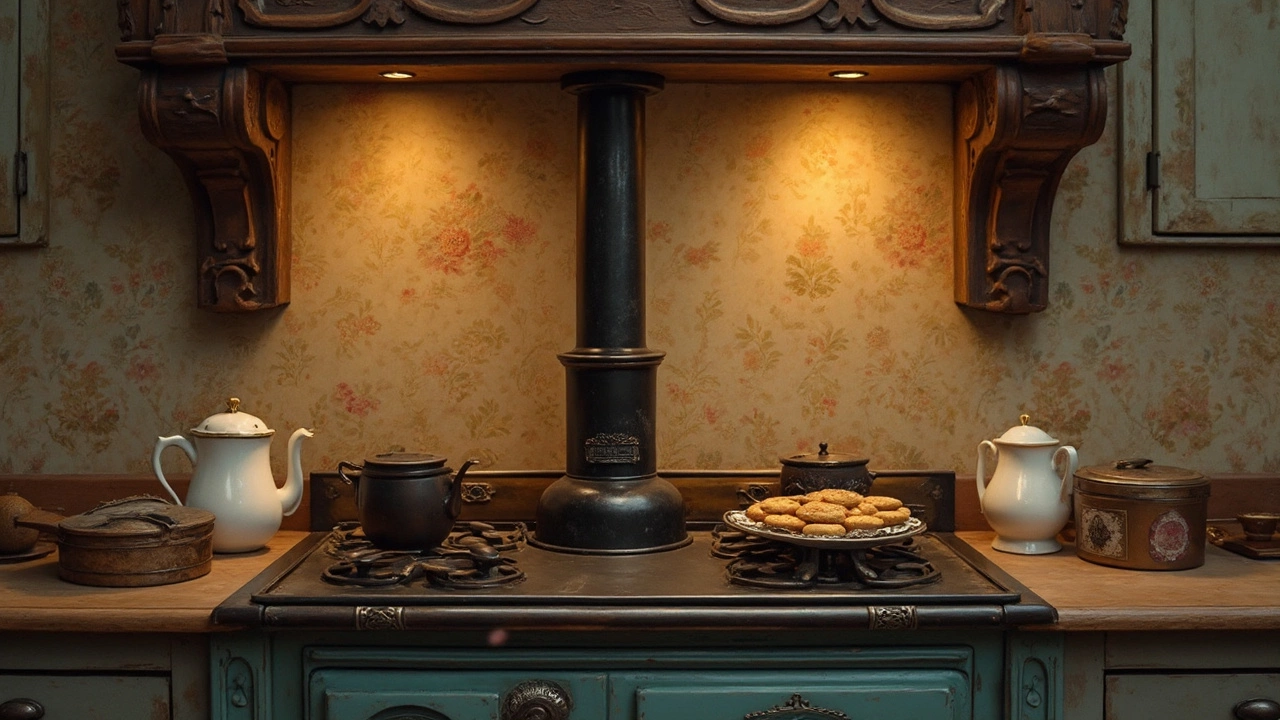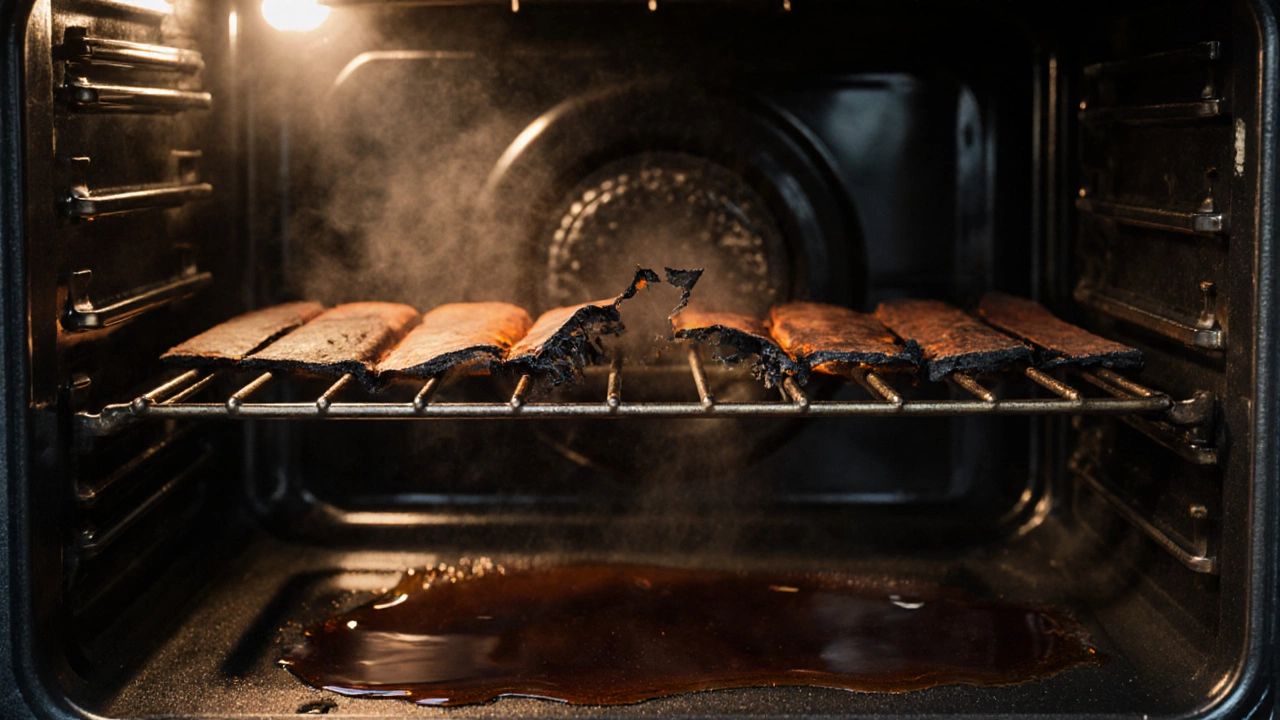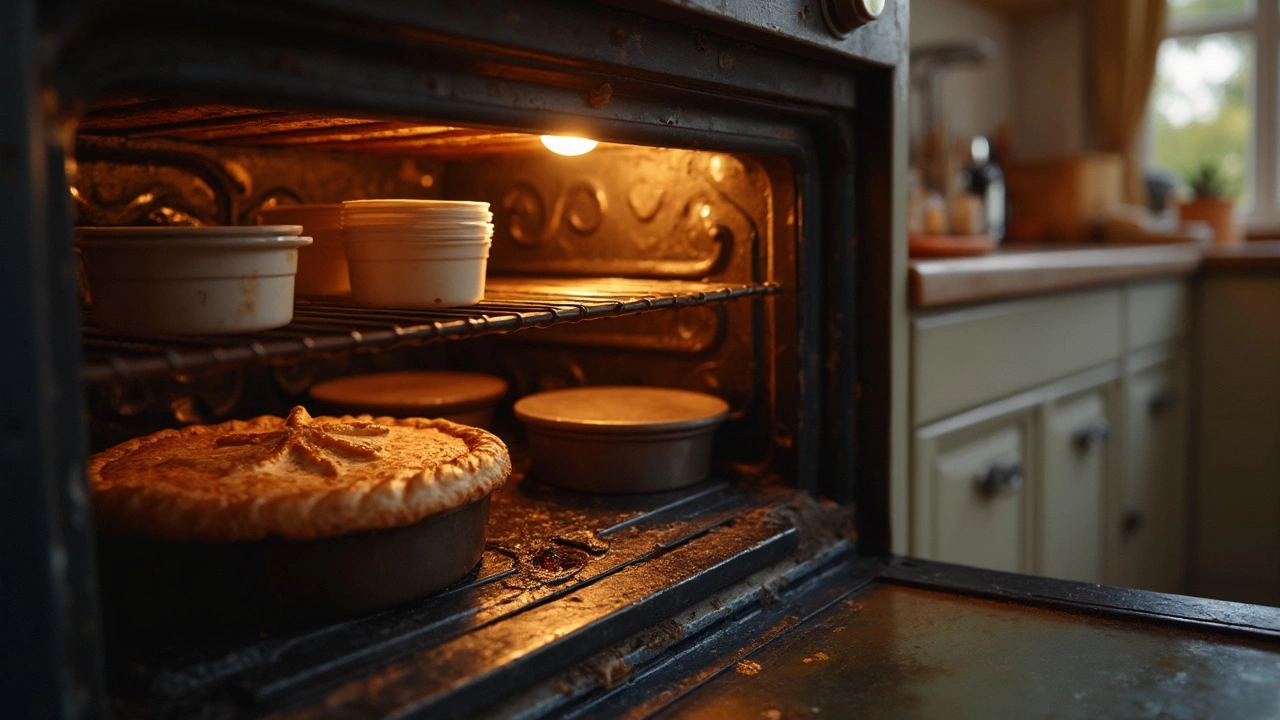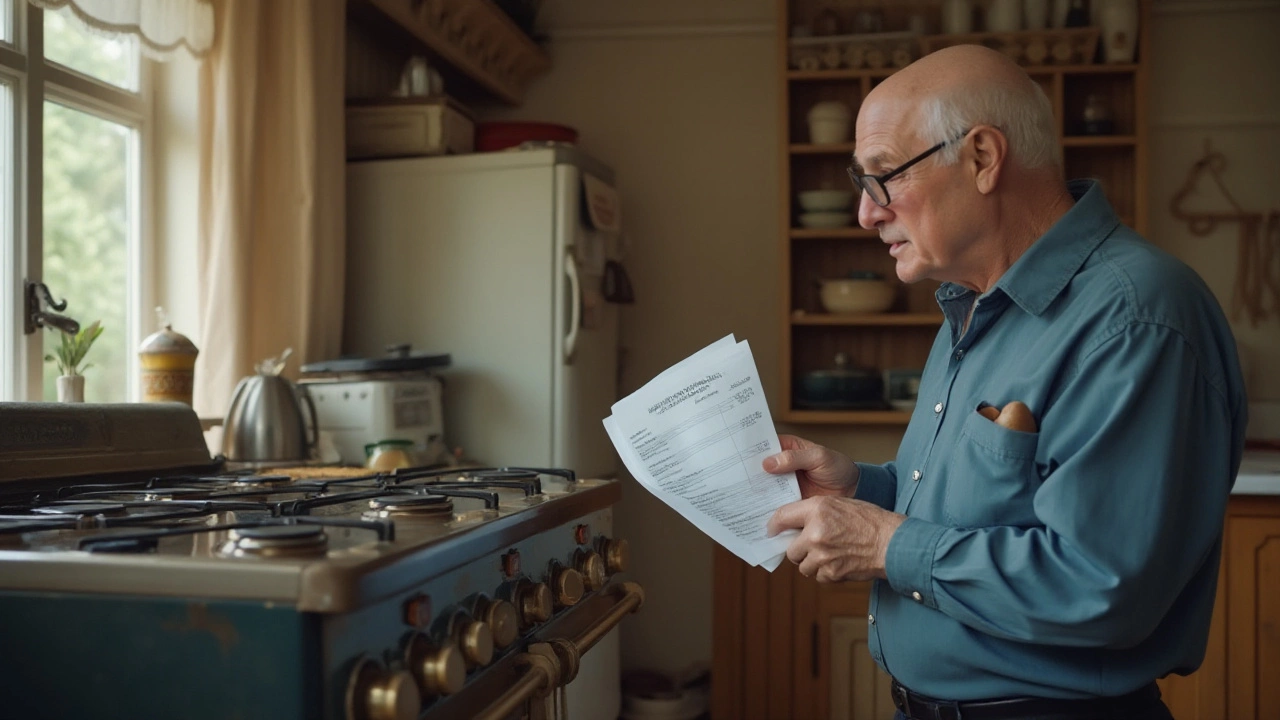
- 9 Nov 2024
- Gideon Thornton
- 0
In your kitchen stands a culinary staple, a silent workhorse that may have seen the rise and fall of countless trends—your trusty 20-year-old electric oven. While it has baked, broiled, and roasted to your heart's content, the years have also added wear to its once pristine condition. The pressing question: Is investing in its repair worth your while, or is it time to bid farewell and opt for the gleam of a modern replacement?
To tackle this decision, we embark on a journey through the lifespan of electric ovens, understanding what common issues arise as they age, and most importantly, conducting a cost-benefit analysis. Delve into the enticing new features found in the latest models, consider the availability of parts for older units, and reflect on your personal connection to this steadfast appliance to guide your choice.
- Understanding the Longevity of Electric Ovens
- Common Issues with Aging Ovens
- Cost-Benefit Analysis of Repairs
- Comparing New Features and Energy Efficiency
- Availability of Replacement Parts
- Sentimental Value and Personalized Options
Understanding the Longevity of Electric Ovens
The longevity of electric ovens is often a fascinating matter for homeowners and chefs alike. On average, these appliances are built to last around 13 to 20 years. This range largely depends on several factors such as the brand, frequency of use, maintenance practices, and of course, how well the owner takes care of it over the years. A 20-year-old oven stands proudly at the top end of this spectrum, indicating not just durability but a testament to its owner’s dedication. Interestingly, some vintage models are still in operation today, cherished for their robust construction and the nostalgic warmth they bring to the kitchen.
In the realm of household appliances, electric ovens have the trait of combining simplicity with efficiency, making them resilient over time. They often contain fewer moving parts than other kitchen gadgets, which translates to fewer components that could break down. Regular cleaning and proper use also significantly extend an oven's life, preventing issues like clogs or inefficient heating. Adherence to these practices can empower your oven to surpass the expected lifespan, sometimes even beating newer models in terms of reliability.
Technology incessantly evolves, but the essential design of electric ovens has remained consistent for decades. This consistency is a boon, as improvements are often in features rather than core function, allowing older ovens to remain competitive in terms of basic performance. Enthusiasts and professionals sometimes argue that new models focus heavily on aesthetics and smart capabilities without substantially altering the cooking quality. In certain forums, users emphasize that, "A well-maintained older model can outperform newer ones in cooking consistency," highlighting a sentiment that values function over form.
"An oven is more than an appliance; it's a staple of efficiency and tradition,” says George Clarke, a veteran appliance technician. "With the right care, an old oven offers more than just longevity—it offers heritage.”
Choosing to repair an older electric oven means recognizing this intrinsic longevity. When you repair rather than replace, you not only lengthen the life of the appliance itself but also contribute to sustainability by reducing electronic waste. Your 20-year-old oven, undoubtedly significant in your kitchen's history, stands as a symbol of reliability and testament to the enduring quality that defined older manufacturing standards. Making the decision to breathe new life into such a pivotal piece of kitchen history ensures that both innovation and tradition have a seat at the table.
Common Issues with Aging Ovens
As electric ovens cross the two-decade mark, they begin to reveal their age in several ways. One of the most frequent problems home chefs encounter is uneven heating. Imagine preparing your signature dish only to find half of it beautifully cooked while the other half remains underdone. This issue often arises because heating elements deteriorate over time, losing their ability to distribute heat uniformly. In some cases, calibrated thermostats—once precise—now misjudge the inside temperature by a significant margin, another reason for unpredictable cooking results.
Another familiar concern in aging ovens is the gradual decline of their electronic components. Modern ovens, even those manufactured 20 years ago, rely on digital displays and control boards to function correctly. Over time, these components face wear and tear; buttons may become unresponsive or displays might flicker, rendering basic operations challenging. These controls are integral to setting temperatures and timers, and their failure can significantly hinder the cooking experience. Just as aging ovens can suffer physical problems, they can develop quirks rooted in their control systems, too.
Electric oven door seals also demand attention as they age. The rubber gaskets that ensure a firm closure and retain heat tend to harden or crack, leading to heat loss. This not only increases cooking times but also hikes up energy consumption—talk about racking up unnecessary costs! Proper seals keep the heat enclosed, maintaining an efficient cooking environment. While replacing these gaskets isn't exceedingly difficult, it's a task that requires regular care as the appliance ages.
Looking beyond standard wear, there’s the issue of aesthetics morphing with time. Knobs worn smooth from constant use, interiors spotted with stubborn splatters, and racks that have lost their lustre are more than cosmetic concerns; they affect the appliance’s performance. A grimy oven may hold stains that affect heat distribution, while grimy racks might not glide as smoothly, making everyday use a challenge rather than a joy. Rejuvenating these parts could restore some functionality, but always at a financial and time cost.
Of course, one must consider the availability of spare parts when deciding to repair an older oven. A survey conducted by the National Association of Home Builders found that many older electric oven models have parts that are difficult to source. This can mean higher costs or, in some cases, unavailability altogether, pushing owners towards more complete replacements rather than repairs. Therefore, whether an oven can be easily fixed often depends on the make and model.
The cost and availability of replacement parts for aging appliances can usually dictate whether repair is a viable option. It often depends on the make and model of the oven, as mentioned in the Consumer Reports.

Cost-Benefit Analysis of Repairs
When contemplating whether to fix a 20-year-old oven, the primary consideration involves weighing the costs of repair against the potential benefits of keeping your trusty kitchen companion. Let’s dive into the nitty-gritty of repair costs, and how these compare against the allure of a new electric oven. The repair bills can vary significantly, driven by factors such as the type and extent of the problem. While minor issues like replacing a malfunctioning thermostat may set you back a modest sum, extensive repairs such as replacing damaged heating elements or circuit boards can resemble the price tag of a good portion of a brand-new appliance.
On the flip side, the charm of older ovens often lies in their robustness. They're built like tanks, with many parts designed to endure significant use. This durability makes them worthwhile candidates for repair, particularly when the central part of the oven is still sound. But here’s where we bring in the economics of the situation: as you tally the repair costs, bear in mind the efficiency, innovations, and energy savings offered by newer models. These high points of modernity could make a compelling case for an upgrade rather than a fix.
When it comes to newer models, energy efficiency is no small concern. An upgrade can significantly lower your energy bills, as newer ovens often boast electricity consumption that’s a fraction of what older models need. An oldie in the kitchen may consume more energy, translating to higher operating costs in the long run. As energy efficient technology advances, many modern ovens come with added conveniences such as pre-programmed settings, digital displays, and even smart home integration, providing a level of control that’s difficult to beat.
According to Jill Nystul from One Good Thing by Jillee, "Sometimes, all it takes is a little bit of care and maintenance to extend the life of appliances and save money in the long run."
Beyond the mechanics and finances, take a moment to reflect on the sentimental value that your old oven holds for you. It might have served your household through countless holiday feasts, birthday parties, and everyday meals, weaving stories into its very structure. Sometimes, an emotional bond with home appliances can tip the scales in favor of fixing rather than replacing. If you do decide on a repair, it might serve as a comforting piece reflecting history and warmth in your home.
Therefore, this decision isn't merely about plugging numbers into a formula—it's about evaluating what you value most. Is it the potential energy and cost savings of a new model? Or do you prioritize the dependability and nostalgia attached to your well-used oven? A thorough cost-benefit analysis can guide you, shedding light on what works best for your wallet and your heart. Taking stock of both tangible and intangible factors will help you reach a decision that you won't regret, all while keeping your kitchen humming along at its best potential capacity.
Comparing New Features and Energy Efficiency
As you stand in front of the gleaming rows of modern-day ovens, it's easy to get swept away by the abundant features this technology now offers. These aren't just the humble appliances of yore; they are sophisticated, state-of-the-art cooking marvels. First, let's talk about the convenience of smart technology that is becoming a staple in many newer models. You can now control settings via smartphone apps, making preheating as simple as a tap on your screen, even if you're still on the commute home. The modern electric ovens allow for precision cooking with features like convection settings that ensure even, consistent cooking results, which are a dream for any home chef striving for culinary perfection.
Moreover, the energy efficiency of newer models can't be overstated. With advancements in insulation, materials, and design, these ovens heat more efficiently, leading to lower energy consumption and reduced utility bills. A 2022 study by the Energy Saving Trust found that modern electric ovens can use up to 20% less energy than their older counterparts, a significant factor if you're conscientious about both the environment and your monthly expenses. Some models now come with energy star ratings, guiding the environmentally-conscious consumer in making the best choice.
Take into consideration the enhancements in self-cleaning modes, eliminating the arduous chore of scrubbed spit-roasted splatter. These modes use modern pyrolytic cleaning technology to turn residue into ash at the touch of a button, a feature unheard of twenty years prior. New features like air fryer settings also add a layer of versatility that wasn't available when your current oven was built. Users looking to embrace healthier cooking options are finding immense value in these inventive touches. 'New technology not only makes cooking easier but also allows for healthier eating habits by cutting down on oils,' notes famed kitchen appliance researcher Lynn Hammond in her recent article in HomeTech Magazine.
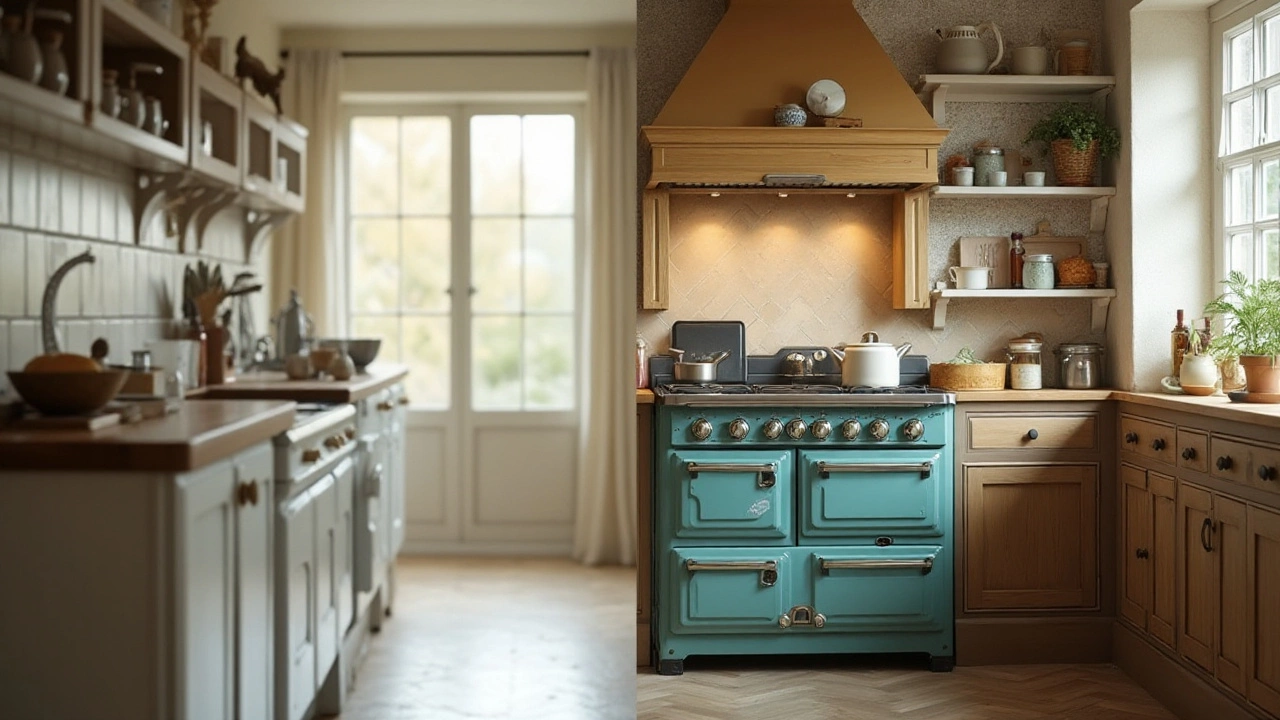
Availability of Replacement Parts
As your electric oven ages, one of the primary concerns is finding the right replacement parts when something goes awry. The deeper we dive into the lifespan of a 20-year-old oven, the clearer it becomes that sourcing parts can often feel like an archaeological endeavor. Manufacturers frequently discontinue parts for older models as they cease production, creating potential headaches for owners looking to keep their vintage appliances running smoothly.
That being said, it isn't a lost cause. The electric oven community is vast, with retailers that specialize in obsolete parts, giving a fighting chance to those determined to hold on to their trusty kitchen companion. They offer a varied catalog ranging from heating elements to oven racks. Additionally, many appliance repair shops have embraced the internet, utilizing online platforms to source rare parts globally. This shift has significantly increased access to necessary components that would otherwise be impossible to find.
"Older appliances are often built to last, and when properly maintained with appropriate parts, they can continue to perform admirably," notes an expert from a leading appliance refurbishing agency.
There's also a burgeoning market for second-hand components. Online marketplaces frequently carry listings from savvy sellers who have painstakingly salvaged operational parts from defunct units. It does, however, require a degree of trust and expertise to ensure that these parts won't give up the ghost prematurely, and buyers must be cautious in their dealings. There are forums and online communities that can offer invaluable advice and firsthand accounts, assisting you in distinguishing quality parts from those that may lead to swift disappointment.
To gauge the availability of parts, it's wise to perform a quick audit under your oven's hood. Note down the model number and cross-reference this with a detailed online search. Look for guidance on parts that align with your make and model or any compatible alternatives. It's not uncommon for certain components to be shared across different models, thereby increasing the field of replacements.
Savvy DIY enthusiasts sometimes venture into 3D printing to manufacture custom parts, although this path requires both high skill levels and initial capital investment into the requisite technology. While not a traditional route, it paints a broader picture of how determined some individuals are to extend the life of their electric ovens. When considering if your repair is feasible, consider touching base with local repair shops. These professionals often have stockpiled parts or connections that the average consumer might overlook.
Sentimental Value and Personalized Options
When we think of appliances, we are often quick to focus on their function and forget their place in the tapestry of our lives. Yet, for many, an electric oven does much more than bake bread or cook a roast. It becomes part of the family story. If your oven has accompanied you through the years—perhaps as the backdrop to cherished family meals, holidays, or baking sessions with children—the sentimental ties can be surprisingly strong. Deciding to repair or replace an appliance that holds such personal significance requires more than a simple cost analysis. It's intertwined with memories of laughter filling the kitchen and the comforting smells that waft into every corner of the house. Sentimental value is inherently personal, and thus its weight can vary greatly from one person to the next.
Echoing these sentiments, a number of homeowners have voiced similar feelings and challenges when dealing with vintage or long-used cookware. For some, keeping an appliance humming along is akin to keeping a connection to the past alive. As one culinary historian noted, "Cooking with familiar tools allows people to touch the past; each meal becomes a link in a chain spanning generations."
"Every scratch, dent, and ding tells a story. It’s about more than utility; it’s about heritage," shares Emma Ronnels, a culinary anthropologist.
In the realm of personalized options, maintaining an older oven might mean more than just repairs. It's an opportunity to adapt it creatively to your evolving lifestyle. Modern technology offers various ways to smarten up older appliances, adapting them to new uses or enhancing their functionality. For instance, adding a smart thermometer or timer might lend precision to your baking sessions, or even integrating LED lights for energy efficiency. These personalized upgrades can elongate the life of an appliance while keeping it aligned with contemporary conveniences without sacrificing its treasured history.
Consider the breadth of options available. While a newer oven might boast the latest tech, sometimes less is more, especially when it comes to maintaining that charming simplicity of yesteryear. Older appliances can often benefit from aesthetic upgrades, too—from swapping out knobs to repainting surfaces—a practice akin to restoring vintage cars, where each detail nurtures a nostalgic allure and personal pride. Crafting a custom experience combined with a dash of ingenuity can transform your vintage oven into a one-of-a-kind centerpiece that spans beyond its oven repair needs, keeping it a treasured member of your household.


